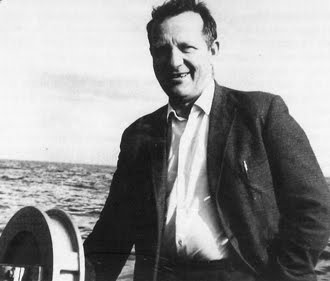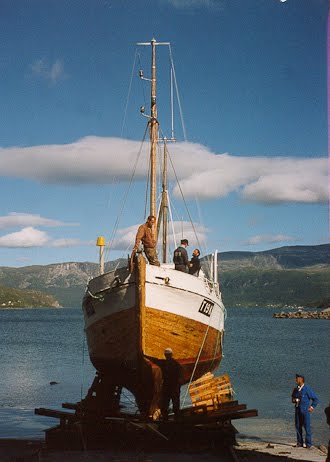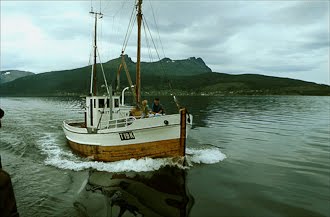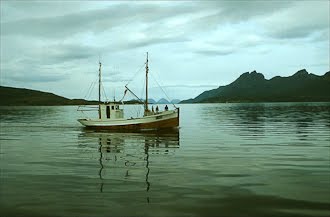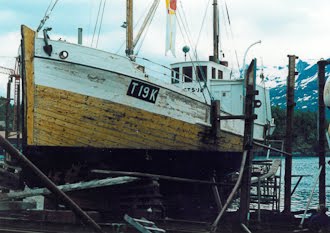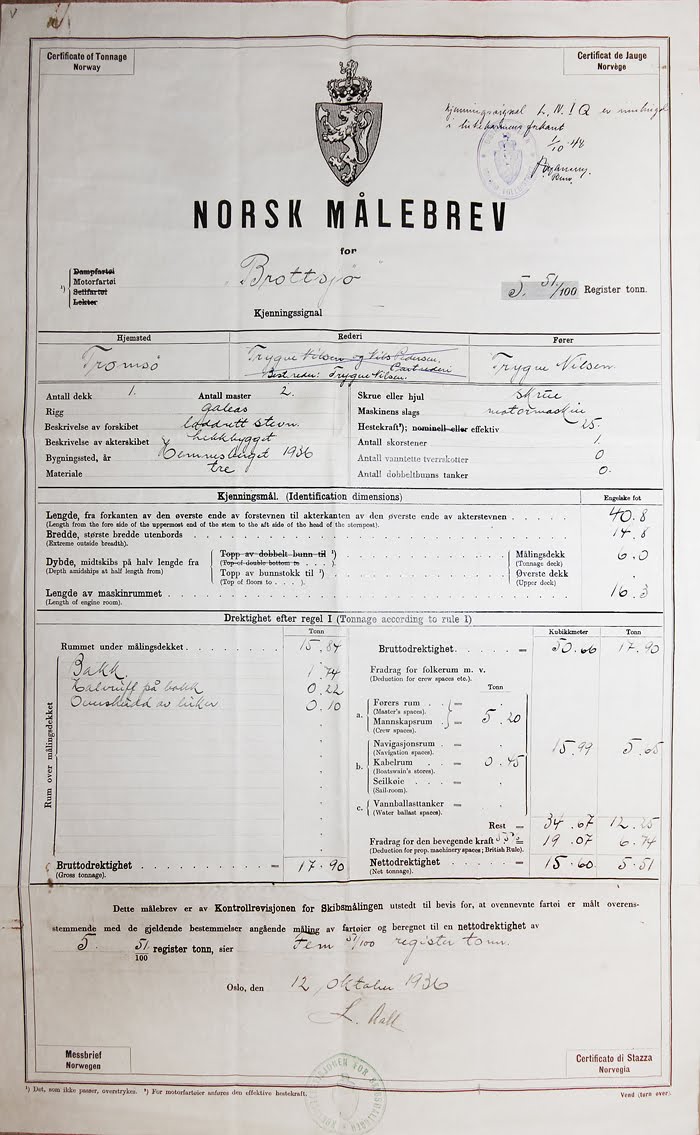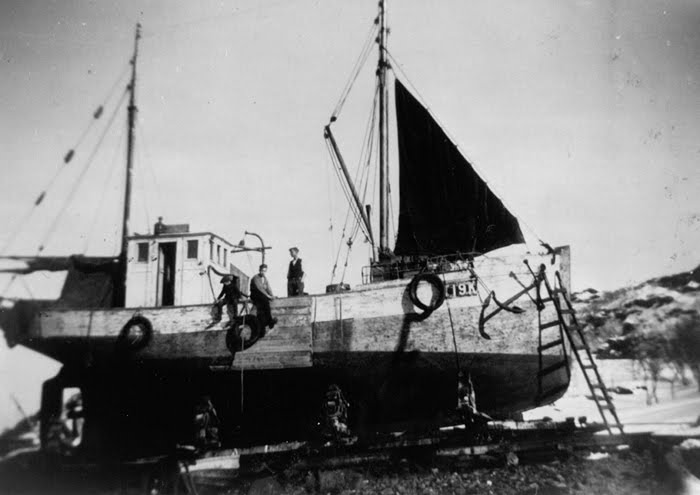
Jeg begynte med garneringa. De en tomme og en kvart tykke plankene legges på slik de originale lå.
I started working on the inside, the one and a quarter inch planks or "garnering" are put back in the same places as the original ones

Blandinga av gammelt og nytt begynner å bli synlig.
The mix of the old and new starts to be visible.

Båtbyggeren Bjørn jobber også på Brottsjø fra nå av. Her jobber han med skottet under bakkbjelken. Det gamle var råttent, men fungerer som mal under oppsettinga av nytt.
Boat builder Bjorn is working on Brottsjø also from now on, here he is working wit the new bulkhead. The old one was rotten in the top and bottom so we use the leftovers for reference.

Bakkplankene på styrbordsida er montert. To lange bolter går gjennom bakkplankene og bakkbjelken under. På denne sida var plankene av gran når båten kom til Gratangen sist på åttitallet, mens de samme plankene på babordsida er i furu. Vi er usikre på hvilket materiale som var benyttet originalt siden det trolig er utført en reparasjon, men mest sannsynlig har det nok vært gran som resten av fartøyet.
On starboard side the new "bakkplank" is mounted to. Two long bolt's go throu it and the beam underneath. On this side the plank was made out of spruce when the boat came here in the early nineties but on port side it was made out of pine, it is the original from when it came here but for now it is not clear what they used when they build the boat, most likely spruce because most of the boat is build from that type of wood.

Her vises bakkplankene på begge sidene.
Here you can see the two next to each other.

Kazimierz har begynt å arbeide med motoren. Denne er i god stand, men trenger allikevel litt stell og fjerning av rust. Trygve Nilsen tok godt vare på Brottsjø i de over femti årene han hadde båten, og maskinrommet var plettfritt når Brottsjø kom til Gratangen.
Kazimierz started working on the engine. The engine is in good condition it have to be cleaned good and all the rust has to be removed. Trygve Nilsen took good care of Brottsjø, he had it for more than 50 years and it's save to say that there was no rust on or around the engine or any other part in the engine room.

Joost har tatt opp arbeidet på huden igjen, de siste plankene.
Joost started working on the planks again, the last ones.
























































